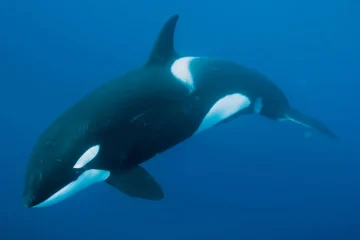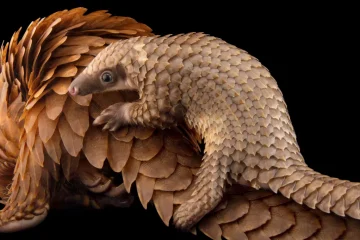If you ever come across one of these creatures, the Basking sharks, I bet the first thing that comes into your mind is “RUN!”. Or maybe “SWIM!”, since they are saltwater fish. And after all, they are the world’s second-largest fish, reaching a whopping 11 meters in length and 3.9 metric tons in weight, along with a large gaping mouth consisting of 6 rows of teeth on the upper jaw and 9 rows of teeth on the lower one, equalling a total of about 1500 little teeth. But did you know that these creatures are actually completely harmless? They are! So join me today as we dive into the subject of Basking sharks on the very day that was dedicated to these magnificent beauties.

Figure 1: Basking shark swimming close to the surface of the ocean
Found all over the world, Basking sharks, or Cetorhinus maximus, is an animal that belongs to the family Cetorhinidae. Their scientific name actually translates to “Great-nosed sea monster” in Greek.
Why are they called “Basking” sharks?
Well in the past, people would spot these huge fish floating and cruising close to the surface of the ocean, which seemed very much as if they were basking in the sun. And because of this, the name “basking shark” stuck with them.
They are one of only three filter-feeding shark species, and hence they would often cruise like this, filtering in tiny organisms called zooplankton with their 3-foot wide mouths. Special organs named the gill rakers are used for this process. They are also passive feeders, meaning that they do not actively suck in water as they do the filtering, but amazingly they are able to filter around 2000 tons of water every hour.
What about their 1.5k teeth then?
Although unsure, most scientists believe their teeth are used as a part of these animals’ mating process, as they aren’t actually used for feeding. This process occurs during the summer months and although it has not been observed scientifically, scars observed on the female sharks’ bodies suggest that this is where the teeth come into play; to hold onto the females during mating. Males are believed to reach sexual maturity at around 12 to 16 years, while females reach maturity at about 20 years.

Figure 2: Image of a Basking shark from the side
Frankly, there are a lot of details about these creatures that are still, to date nothing but a mystery. For example, little is known about the basking shark’s reproductive cycle, and the closest idea we have of it is nothing more than speculation, but it is believed that their gestation period lasts for about 3.5 years. Growth rings on the shark’s vertebrae are used to estimate age, and that has led most scientists to believe that basking sharks have a lifespan of about 30 years or more. But there is another theory that suggests that these rings are only a result of growth episodes, and are not related to aging at all.
These migratory sharks spend their springs and summers traveling to coastal, nutrient-rich areas along the Atlantic and even though they are rarely seen in the winter months, it has been discovered recently that they spend their time in deeper and more distant waters during this time. For some time it was believed that Basking sharks would hibernate come winter, but this theory was debunked recently with the use of new technologies for the study of these fish.
Have we endangered another species? Again?
Sadly, according to The International Union for Conservation of Nature and Natural Resources, Basking sharks are classified as an endangered species, mainly due to their over-exploitation and their slow reproductive cycle. During the 20th century, these fish were widely hunted down for their liver oil, meat, skin, as well as their fins. Even though many countries began prohibiting this activity in the 90s, to date these fish still die in large due to human activities such as fishing, ingestion of toxic microplastics due to pollution, and accidents such as being hit by boats. And also considering the fact that these animals only produce very few young, they are in even more danger of extinction than fathomable.

Figure 3: A view that shows the wide open gaping mouth of a Basking shark, along with its many teeth.
Actions have been taken to conserve these peaceful giants due to which Basking sharks are now considered one of the most highly protected sharks in European waters. But there’s always more that we can do for these animals, to ensure that they’ll have a fighting chance against extinction. And it’s high time we did it.
Written by:
Leandra Shiyara,
1st Year Undergraduate,
Biological Science Stream,
Faculty of Science,
University of Colombo.
References:
- The Editors of Encyclopaedia Britannica. (2023, October 31). Basking shark | Size, Habitat, Diet, & Facts. Encyclopedia Britannica. https://www.britannica.com/animal/basking-shark
- Basking shark. (n.d.). Animals. https://www.nationalgeographic.com/animals/fish/facts/basking-sharks
Image Courtesy:



0 Comments